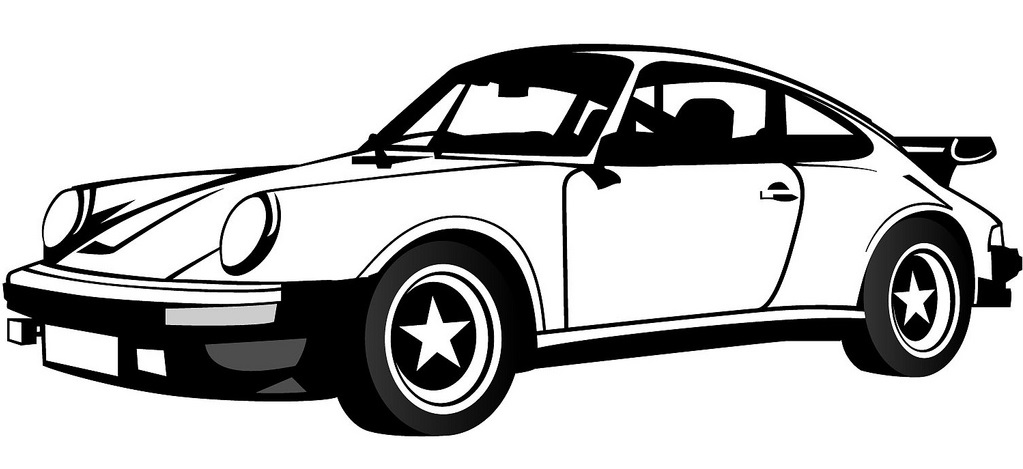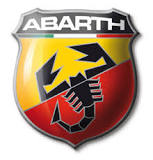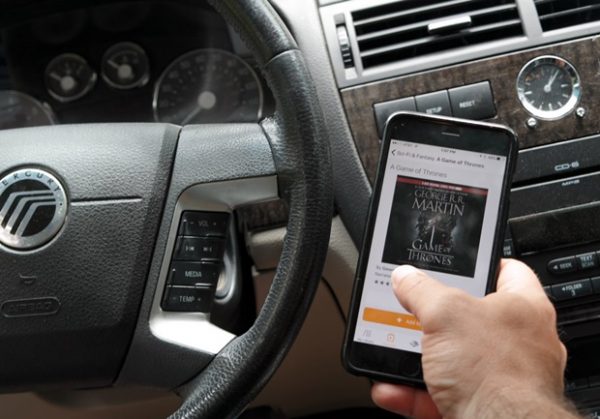A brief history of
Abarth
Introduction
The car manufacturer Abarth has made an important impact on the automotive world. In this article we will give a brief but detailed history of the Abarth marque.
We will look at the origins of Abarth looking at who, why, where and when Abarth was founded. We'll look at the design of the iconic Abarth logo and what are some the more significant Abarth models.
We'll take a glance at what racing history the Abarth has and who some of the most important people have been in the history of Abarth over the years.
Who, where, when and why was
Abarth founded?
Abarth, the renowned Italian car manufacturer, was founded by Carlo Abarth in 1949. Born on November 15, 1908, in Austria-Hungary (now Italy), Carlo Abarth was a visionary entrepreneur and engineer. He established Abarth & C. S.p.A. in Bologna, Italy, and embarked on a journey to create high-performance vehicles that would leave a lasting mark on the automotive industry.
Carlo Abarth's passion for speed and racing led him to focus on producing aftermarket performance parts and tuning kits for small cars. His aim was to enhance their power, handling, and overall performance. Abarth's products quickly gained recognition and popularity, with his performance-enhanced Fiat 500 and Fiat 600 models becoming highly sought after.
Carlo Abarth's innovative engineering solutions and relentless pursuit of speed and performance fueled the success of the brand. Abarth vehicles soon gained a reputation for their agility, power, and distinct exhaust note. Abarth's collaboration with Fiat resulted in numerous victories in motorsport, further solidifying the brand's position as a symbol of performance and racing excellence.
Throughout its history, Abarth has been driven by a relentless passion for speed and performance. The brand's commitment to excellence and its close association with motorsport have led to the creation of iconic models like the Abarth 595, Abarth 124 Spider, and Abarth 500. Today, Abarth continues to produce high-performance vehicles that embody the spirit and heritage of the brand, offering thrilling driving experiences and capturing the hearts of enthusiasts around the world.
How did the
Abarth logo originate?

How did the Abarth logo originate?
The Abarth logo holds a rich history that reflects the brand's heritage and racing pedigree. The logo, featuring a scorpion, is an iconic symbol associated with Abarth vehicles. The story behind the scorpion logo dates back to the zodiac sign of the brand's founder, Carlo Abarth, who was born on November 15, 1908, under the sign of Scorpio.
The scorpion logo represents the passion, agility, and fierce nature of Abarth vehicles. It symbolizes the brand's commitment to delivering high-performance cars that leave a lasting impression on the road and the track. The logo's design is simple yet striking, featuring a stylized scorpion with its tail raised and ready to strike.
Over the years, the Abarth logo has evolved, with subtle refinements to its design. However, the core elements of the scorpion and its dynamic pose have remained constant, maintaining a strong brand identity and recognition. The logo's clean lines and bold presence convey the brand's dedication to performance and a captivating driving experience.
Today, the Abarth logo continues to represent the brand's racing heritage and the spirit of its high-performance vehicles. It is a symbol of excitement, power, and Italian craftsmanship. The scorpion logo serves as a badge of honor for Abarth owners and enthusiasts, embodying the brand's legacy of passion and performance.
What are some of the significant
Abarth models?
Abarth has produced a range of iconic and high-performance models throughout its history. From the early days of Carlo Abarth's tuning company to the present, Abarth cars have earned a reputation for their agility, power, and exhilarating driving experience.
One of the earliest and most significant models in Abarth's history is the Abarth 595, introduced in the 1960s. Based on the Fiat 500, the Abarth 595 was a compact and nimble powerhouse. It featured a tuned engine, upgraded suspension, and distinctive styling cues that set it apart from its Fiat counterpart. The Abarth 595 quickly gained popularity among enthusiasts and established Abarth as a force to be reckoned with in the small performance car segment.
In the 1980s, Abarth unveiled the Abarth 131 Rally, a rally racing legend. Derived from the Fiat 131, the Abarth 131 Rally was built to dominate the rally stages. It featured a powerful engine, improved aerodynamics, and enhanced suspension for exceptional handling and performance. The Abarth 131 Rally achieved numerous victories in the World Rally Championship and solidified Abarth's reputation as a formidable force in motorsport.
Fast forward to the 21st century, and Abarth continues to produce thrilling performance cars. The Abarth 500, introduced in 2008, brought the Abarth badge back to the forefront of the hot hatch segment. With its turbocharged engine, sporty styling, and aggressive exhaust note, the Abarth 500 delivered an exhilarating driving experience in a compact package. It quickly gained a cult following and became synonymous with the Abarth brand's values of performance and excitement.
More recently, Abarth has expanded its lineup with models like the Abarth 124 Spider. Based on the Fiat 124 Spider, the Abarth variant injects even more sportiness into the roadster. With its turbocharged engine, upgraded suspension, and aggressive styling, the Abarth 124 Spider offers a thrilling open-top driving experience.
Abarth's commitment to performance extends beyond its road-going models. The brand also actively participates in motorsport, with the Abarth 124 Rally serving as a rally racing champion. The Abarth 124 Rally is a purpose-built racing machine designed to compete in international rally events. With its lightweight construction, powerful engine, and advanced rally-specific features, the Abarth 124 Rally has achieved success in various racing championships, showcasing Abarth's racing pedigree.
Throughout its history, Abarth has consistently delivered high-performance models that capture the essence of Italian sports cars. With their distinctive styling, thrilling driving dynamics, and motorsport heritage, Abarth cars continue to inspire enthusiasts and leave a lasting impression on the road and the track.

One of Abarth's Most Iconic Models
Who are some of the most important people in
Abarth's History
Abarth owes much of its success to the visionary individuals who have shaped its history. From its founder, Carlo Abarth, to the engineers, designers, and drivers who have contributed to the brand's achievements, these individuals have played a crucial role in establishing Abarth as a symbol of performance and passion.
Carlo Abarth, a racing driver and engineer, founded Abarth & C. in 1949 with the goal of creating high-performance vehicles and components. His deep understanding of automotive engineering and his relentless pursuit of excellence propelled Abarth to new heights. Carlo Abarth's passion for racing and his dedication to pushing the boundaries of performance shaped the brand's identity and laid the foundation for its success.
One of the key figures in Abarth's history is Aurelio Lampredi, an acclaimed Italian engineer. Lampredi joined Abarth in the 1950s and played a pivotal role in developing the brand's engines. His expertise and innovative designs contributed to the impressive power and efficiency of Abarth's performance cars. Lampredi's collaboration with Carlo Abarth resulted in the creation of legendary engines that propelled Abarth to victories in motorsport.
Another notable figure in Abarth's legacy is Mario Colucci, a talented engineer and designer who worked closely with Carlo Abarth. Colucci was responsible for the iconic styling of Abarth's cars, including the distinctive scorpion logo that has become synonymous with the brand. His creative vision and attention to detail gave Abarth vehicles a unique and recognizable identity, further enhancing the brand's appeal among enthusiasts.
On the racing front, drivers like Arturo Merzario and Amédée Gordini made significant contributions to Abarth's success. Merzario, a renowned Italian racing driver, achieved numerous victories behind the wheel of Abarth cars, showcasing the brand's performance capabilities on the track. Gordini, a French racing driver and engineer, collaborated with Abarth to develop racing versions of Abarth's road cars, combining his technical expertise with Abarth's performance-oriented philosophy.
The legacy of these and many other talented individuals has shaped Abarth's heritage and continues to influence its present-day success. Their passion for performance, engineering prowess, and commitment to pushing the boundaries have elevated Abarth to a position of prestige in the automotive industry.
Nowadays, the Abarth team comprises a dedicated group of engineers, designers, and professionals who carry forward the brand's legacy. They continue to innovate, develop cutting-edge technologies, and produce exhilarating vehicles that embody the spirit of Abarth. With their collective expertise and unwavering commitment, these individuals ensure that Abarth remains at the forefront of automotive performance and continues to inspire enthusiasts worldwide.

One of the most influential people in the history of Abarth
Abarth's Racing History
Racing has been an integral part of Abarth's DNA since its inception, with the brand establishing a formidable presence on both the road and the track. Abarth's racing history is marked by a series of notable achievements, showcasing the brand's commitment to performance and motorsport excellence.
Abarth's racing legacy began in the 1950s when the brand entered the world of motorsport with its modified Fiat 600 vehicles. These small, lightweight cars were transformed into formidable racing machines by Abarth's team of engineers and designers. The Abarth 750 GT, based on the Fiat 600, achieved significant success in its class, capturing numerous victories and podium finishes in endurance races and hill climb events.
Throughout the 1960s, Abarth continued to dominate the racing scene with its range of high-performance models. The Abarth 850 TC and the Abarth 1000 TC, based on the Fiat 600 and 850 respectively, became legendary for their agility, speed, and durability. These cars competed in various racing disciplines, including touring car championships and rally events, where they consistently outperformed larger and more powerful competitors.
One of the highlights of Abarth's racing history was its success in the World Sportscar Championship. In the 1960s, Abarth collaborated with manufacturers like Porsche and Alfa Romeo to develop racing prototypes. The Abarth-Porsche 2000 and Abarth-Simca 2000 prototypes demonstrated remarkable performance and endurance, securing victories and class wins in prestigious endurance races such as the Targa Florio and the 24 Hours of Le Mans.
In the 1970s, Abarth shifted its focus to rally racing, where it achieved remarkable success. The Abarth 124 Rally, based on the Fiat 124, became an icon of rally competition. The car's lightweight construction, powerful engine, and exceptional handling made it a formidable contender on both tarmac and gravel surfaces. Abarth's rally exploits included victories in the European Rally Championship, the Monte Carlo Rally, and the World Rally Championship, solidifying the brand's reputation as a force to be reckoned with in the rally world.
Today, Abarth continues its racing heritage with the Abarth 124 Spider Rally, a dedicated rally version of its iconic roadster. The Abarth 124 Spider Rally combines the spirit of the original Abarth 124 Rally with modern engineering advancements, delivering an exhilarating performance on the rally stages.
From its early racing successes to its continued presence in motorsport today, Abarth's racing history exemplifies the brand's commitment to performance, innovation, and the pursuit of victory. The brand's racing achievements have not only solidified its reputation among enthusiasts but have also contributed to the development of high-performance technologies and the advancement of automotive engineering.
With its rich racing heritage, Abarth remains a symbol of performance and motorsport excellence, inspiring a new generation of racing enthusiasts and serving as a testament to the enduring legacy of Carlo Abarth's vision.
Summary
Abarth is a renowned car manufacturer known for its rich racing heritage and high-performance vehicles. With a history deeply rooted in motorsport, Abarth has established itself as a symbol of performance and excellence on both the road and the track. From its humble beginnings modifying Fiat models to its impressive victories in various racing disciplines, Abarth has consistently pushed the boundaries of automotive engineering.
The brand's success can be attributed to the vision and dedication of its founder, Carlo Abarth, who had a relentless passion for performance. Abarth's racing pedigree is highlighted by its numerous achievements, including victories in endurance races, rally championships, and the World Sportscar Championship. Throughout the decades, Abarth has created iconic models like the Abarth 750 GT, Abarth 1000 TC, and the Abarth 124 Rally, all known for their agility, speed, and exceptional performance.
Abarth's legacy continues to thrive today, with the brand maintaining its commitment to racing and high-performance vehicles. The Abarth 124 Spider Rally stands as a testament to Abarth's enduring presence in the motorsport world. As a brand, Abarth embodies the spirit of competition and innovation, captivating enthusiasts with its powerful engines, precise handling, and distinctive design. Abarth's rich racing heritage has left an indelible mark on the automotive industry, inspiring generations of racing enthusiasts and ensuring that the brand remains a symbol of performance and passion.
View Abarth Car Specifications
More Manufacturer Histories.
























